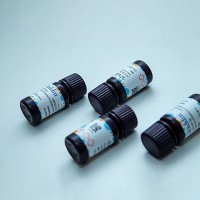Models of Depression: Unpredictable Chronic Mild Stress in Mice
互联网
- Abstract
- Table of Contents
- Materials
- Figures
- Literature Cited
Abstract
Major depression is a complex psychiatric disorder characterized by affective, cognitive, and physiological impairments that lead to maladaptive behavior. The high lifetime prevalence of this disabling condition, coupled with limitations in existing medications, make necessary the development of improved therapeutics. This requires animal models that allow investigation of key biological correlates of the disorder. Described in this unit is the unpredictable chronic mild stress mouse model that is used to screen for antidepressant drug candidates. Originally designed for rats, this model has been adapted for mice to capitalize on the advantages of this species as an experimental model, including inter?strain variability, which permits an exploration of the contribution of genetic background, the ability to create transgenic animals, and lower cost. Thus, by combining genetic features and socio?environmental chronic stressful events, the unpredictable, chronic mild stress model in mice can be used to study the etiological and developmental components of major depression, and to identify novel treatments for this condition. Curr. Protoc. Pharmacol. 61:5.65.1?5.65.17 © 2013 by John Wiley & Sons, Inc.
Keywords: major depression; animal model; antidepressants
Table of Contents
- Introduction
- Basic Protocol 1: Unpredictable Chronic Mild Stress (UCMS) Test in Mice
- Basic Protocol 2: Assessment of Self‐Directed Activity and Anhedonia in Mice
- Commentary
- Literature Cited
- Figures
- Tables
Materials
Basic Protocol 1: Unpredictable Chronic Mild Stress (UCMS) Test in Mice
Materials
Basic Protocol 2: Assessment of Self‐Directed Activity and Anhedonia in Mice
Materials
|
Figures
-

Figure 5.65.1 Experimental design. Four groups of mice ( n = 16 mice per group) were created based on the environment (non‐UCMS/UCMS) and the treatment (vehicle/fluoxetine). The UCMS regimen lasted 9 weeks. The coat state and the body weight were assessed weekly by two experimenters blind to the treatment. Fluoxetine (20 mg/kg/day) and vehicle (NaCl, 9 g/liter) intraperitoneal administration began after two weeks of UCMS and continued until the end of the experiment. On the seventh week, behavioral tests (cookie test, nest building test and splash test) were initiated. View Image -

Figure 5.65.2 Example of a plastic restraint tube designed, built, and used in our laboratory. This restraint tube (6.5‐cm length × 3.7‐cm i.d.) is closed at one end by a plastic wall pierced with a hole, allowing the animal to put its snout outside. The other end is closed by a rotating lid pivoting around a screw. Small holes on the tube enable air circulation. View Image -

Figure 5.65.3 Assessment of the coat state for (A ) non‐UCMS control mouse and (B ) UCMS‐subjected mouse. The coat state score results from a qualitative scoring of different parts of the body including the head, the neck, the forepaws, the back, the abdomen, the hindpaws, and the tail. Each zone is scored 0 if in a good state (the fur is smooth and shiny, with no tousled, spiky patches), 0.5 if in moderately bad state (the fur is slightly fluffy with some spiky patches), and 1 in bad state (the fur is dirty and fluffy on most of the body with slight staining). On the figure, the non‐UCMS control mouse would be scored 0.5 given the presence of a slight degradation of the coat on the neck. The UCMS mouse would be scored 1 on the head, 1 on the neck, 1 on the back and 0.5 on the abdomen (not visible on the picture), and thus obtain a global score of 3.5. Mice were marked with picric acid in these pictures. View Image -

Figure 5.65.4 Example of the apparatus designed, built and used in our laboratory. This device consist of three aligned chambers (20‐cm length × 20‐cm width × 20‐cm height) communicating by two gates (doors are controlled by the experimenters). Only the colors of the walls and the floor are different between the chambers: white for the first one where the mouse is placed, gray for the second, and black for the third chamber where the food is available. View Image -

Figure 5.65.5 Example of nests. (A ) Score 1: the mouse did not use the cotton nestlet, which is intact. (B ) Score 2: the mouse partially used the cotton nestlet. (C ) Score 3: the mouse scattered the cotton, but there is no nest. (D ) Score 4: the mouse gathered the cotton to form a flat nest. (E ) Score 5: the mouse gathered the cotton to form a “comfortable” nest with walls and a small entry. It is possible to assign an intermediate score for nests that do not fully satisfy the scoring criteria. Mice were marked with picric acid in these pictures. View Image -

Figure 5.65.6 Example of a “staircase‐shaped” protocol with three sets of mice that started the UCMS protocol with 5 days lag. Each set of mice experiences the exact same schedule of stressors, but not at the same time. After week 7 of UCMS, mice are subjected to three days of behavioral testing (BT) in the morning (respectively BT 1, BT 2, BT 3, and BT 4), and subjected to usual stressors (St) in the afternoon (respectively St 1, St 2, St 3, and St 4). Animals are then sacrificed (Sc), which allows minimization of the number of mice involved in the second phase of behavioral tests for the second set. View Image -

Figure 5.65.7 Effects of unpredictable chronic mild stress (UCMS) and 6‐week fluoxetine treatment (20 mg/kg/day, i.p.) on physical state. (A ) The UCMS induced a significant deterioration of the coat state, as demonstrated by increasing coat state scores (non‐UCMS/vehicle group versus UCMS/vehicle group, *** p <0.001). Drug treatment initiated in the beginning of the third week of the UCMS exposure reversed this deterioration after 3 weeks of fluoxetine administration (UCMS/vehicle group versus UCMS/fluoxetine group, ## p <0.01 and ### p <0.001). No significant difference was observed between the two non‐UCMS groups. (B ) The UCMS significantly disrupts the body weight gain (non‐UCMS/vehicle versus UCMS/vehicle, * p <0.05, ** p <0.01 and *** p <0.001), whereas chronic treatment with fluoxetine counteracted this disruption (UCMS/vehicle versus UCMS/fluoxetine, # p <0.05, ## p <0.01 and ### p <0.001) (mean ± standard error; n = 16 mice per group). View Image -

Figure 5.65.8 Effects of unpredictable chronic mild stress (UCMS) and 6‐week fluoxetine treatment (20 mg/kg/day, i.p.) on food consumption in the cookie test. (A ) As a control experiment, the consumption of a regular food pellet (number of bites) was quasi‐null during the four sessions for all groups. (B ) Compared to the UCMS/vehicle group, the consumption of the cookie increased in both non‐UCMS/vehicle group ~undefined p <0.05 and ** p <0.01) and UCMS/fluoxetine group (# p <0.05 and ## p <0.01) during the third and the fourth session. (C ) No significant difference of the latency to chew the regular food pellet was observed between the experimental groups over the four sessions. (D ) Compared to the UCMS/vehicle group, the latency to chew the cookie decreased in both non‐UCMS/vehicle group ~undefined p <0.05 and ** p <0.01) and UCMS/fluoxetine group (# p <0.05 and ## p <0.01) during the third and the fourth session (mean ± standard error; n = 8 mice per group). View Image -

Figure 5.65.9 Effect of unpredictable chronic mild stress (UCMS) and 6‐week fluoxetine treatment (20 mg/kg/day, i.p.) on behavior in the nest building and splash tests. (A ) In the nest building test, nesting behavior was decreased in UCMS/Vehicle mice compared to non‐UCMS/vehicle group ~undefined p <0.05), while chronic treatment with fluoxetine reversed this UCMS‐induced alteration (data show the score of the nest quality at the end of the 24‐hr nesting period; UCMS/vehicle group versus UCMS/fluoxetine group, * p <0.05). (B, C, D ) In the splash test, UCMS induced an increase in the latency to groom, and a decrease in grooming frequency, as well as the amount of time spent grooming (non‐UCMS/vehicle group versus UCMS/vehicle group, ** p <0.01), which was reversed by chronic treatment with fluoxetine (UCMS/vehicle group versus UCMS/fluoxetine group, ** p <0.01) (mean ± standard error; n = 16 mice per group). View Image
Videos
Literature Cited
| Aickin, M. and Gensler, H. 1996. Adjusting for multiple testing when reporting research results: The Bonferroni vs. Holm methods. Am. J. Public Health 86:726‐728. | |
| Alonso, R., Griebel, G., Pavone, G., Stemmelin, J., le, F.G., and Soubrie, P. 2004. Blockade of CRF(1) or V(1b) receptors reverses stress‐induced suppression of neurogenesis in a mouse model of depression. Mol. Psychiatry 9:278‐286, 224. | |
| Belzung, C. and Lemoine, M. 2011. Criteria of validity for animal models of psychiatric disorders: Focus on anxiety disorders and depression. Biol. Mood Anxiety Disord. 1:9. | |
| Caspi, A., Sugden, K., Moffitt, T.E., Taylor, A., Craig, I.W., Harrington, H., McClay, J., Mill, J., Martin, J., Braithwaite, A., and Poulton, R. 2003. Influence of life stress on depression: Moderation by a polymorphism in the 5‐HTT gene. Science 301:386‐389. | |
| Deacon, R.M. 2006. Assessing nest building in mice. Nat. Protoc. 1:1117‐1119. | |
| Ducottet, C. and Belzung, C. 2005. Correlations between behaviours in the elevated plus‐maze and sensitivity to unpredictable subchronic mild stress: Evidence from inbred strains of mice. Behav. Brain Res. 156:153‐162. | |
| Ducottet, C., Griebel, G., and Belzung, C. 2003. Effects of the selective nonpeptide corticotropin‐releasing factor receptor 1 antagonist antalarmin in the chronic mild stress model of depression in mice. Prog. Neuropsychopharmacol. Biol. Psychiatry 27:625‐631. | |
| Griebel, G., Simiand, J., Serradeil‐Le, G.C., Wagnon, J., Pascal, M., Scatton, B., Maffrand, J.P., and Soubrie, P. 2002. Anxiolytic‐ and anti‐depressant‐like effects of the non‐peptide vasopressin V1b receptor antagonist, SSR149415, suggest an innovative approach for the treatment of stress‐related disorders. Proc. Natl. Acad. Sci. U.S.A 99:6370‐6375. | |
| Griebel, G., Stemmelin, J., and Scatton, B. 2005. Effects of the cannabinoid CB1 receptor antagonist rimonabant in models of emotional reactivity in rodents. Biol. Psychiatry 57:261‐267. | |
| Ibarguen‐Vargas, Y., Surget, A., Touma, C., Palme, R., and Belzung, C. 2008. Multifaceted strain‐specific effects in a mouse model of depression and of antidepressant reversal. Psychoneuroendocrinology 33:1357‐1368. | |
| Isingrini, E., Camus, V., Le Guisquet, A.M., Pingaud, M., Devers, S., and Belzung, C. 2010. Association between repeated unpredictable chronic mild stress (UCMS) procedures with a high fat diet: A model of fluoxetine resistance in mice. PLoS One 5:e10404. | |
| Kalueff, A.V. and Tuohimaa, P. 2004a. Contrasting grooming phenotypes in C57Bl/6 and 129S1/SvImJ mice. Brain Res. 1028:75‐82. | |
| Kalueff, A.V. and Tuohimaa, P. 2004b. Grooming analysis algorithm for neurobehavioural stress research. Brain Res. Brain Res. Protoc. 13:151‐158. | |
| Katz, R.J. 1982. Animal model of depression: Pharmacological sensitivity of a hedonic deficit. Pharmacol. Biochem. Behav. 16:965‐968. | |
| Kendler, K.S., Gardner, C.O., and Prescott, C.A. 2002. Toward a comprehensive developmental model for major depression in women. Am. J. Psychiatry 159:1133‐1145. | |
| Muscat, R., Papp, M., and Willner, P. 1992. Reversal of stress‐induced anhedonia by the atypical antidepressants, fluoxetine and maprotiline. Psychopharmacology 109:433‐438. | |
| Nollet, M., Gaillard, P., Minier, F., Tanti, A., Belzung, C., and Leman, S. 2011. Activation of orexin neurons in dorsomedial/perifornical hypothalamus and antidepressant reversal in a rodent model of depression. Neuropharmacology 61:336‐346. | |
| Papp, M., Willner, P., and Muscat, R. 1991. An animal model of anhedonia: Attenuation of sucrose consumption and place preference conditioning by chronic unpredictable mild stress. Psychopharmacology 104:255‐259. | |
| Papp, M., Muscat, R., and Willner, P. 1992. Subsensitivity to dopamine agonists following chronic unpredictable mild stress. J. Psychopharmacol. 6:116. | |
| Pothion, S., Bizot, J.C., Trovero, F., and Belzung, C. 2004. Strain differences in sucrose preference and in the consequences of unpredictable chronic mild stress. Behav. Brain Res. 155:135‐146. | |
| Sibille, E., Wang, Y., Joeyen‐Waldorf, J., Gaiteri, C., Surget, A., Oh, S., Belzung, C., Tseng, G.C., and Lewis, D.A. 2009. A molecular signature of depression in the amygdala. Am. J. Psychiatry 166:1011‐1024. | |
| Stemmelin, J., Cohen, C., Terranova, J.P., Lopez‐Grancha, M., Pichat, P., Bergis, O., Decobert, M., Santucci, V., Francon, D., Alonso, R., Stahl, S.M., Keane, P., Avenet, P., Scatton, B., le, F.G., and Griebel, G. 2008. Stimulation of the beta3‐adrenoceptor as a novel treatment strategy for anxiety and depressive disorders. Neuropsychopharmacology 33:574‐587. | |
| Surget, A. and Belzung, C. 2009. Unpredictable chronic mild stress in mice. In Experimental Animal Models in Neurobehavioral Research (A.V. Kalueff and J.L. LaPorte, eds.) pp. 79‐112. Nova Science Publishers, New York. | |
| Surget, A., Saxe, M., Leman, S., Ibarguen‐Vargas, Y., Chalon, S., Griebel, G., Hen, R., and Belzung, C. 2008. Drug‐dependent requirement of hippocampal neurogenesis in a model of depression and of antidepressant reversal. Biol. Psychiatry 64:293‐301. | |
| Surget, A., Wang, Y., Leman, S., Ibarguen‐Vargas, Y., Edgar, N., Griebel, G., Belzung, C., and Sibille, E. 2009. Corticolimbic transcriptome changes are state‐dependent and region‐specific in a rodent model of depression and of antidepressant reversal. Neuropsychopharmacology 34:1363‐1380. | |
| Surget, A., Tanti, A., Leonardo, E.D., Laugeray, A., Rainer, Q., Touma, C., Palme, R., Griebel, G., Ibarguen‐Vargas, Y., Hen, R., and Belzung, C. 2011. Antidepressants recruit new neurons to improve stress response regulation. Mol. Psychiatry 16:1177‐1188. | |
| Willner, P. 1997. Validity, reliability and utility of the chronic mild stress model of depression: A 10‐year review and evaluation. Psychopharmacology 134:319‐329. | |
| Willner, P., and Mitchell, P.J. 2002. The validity of animal models of predisposition to depression. Behav. Pharmacol. 13:169‐188. | |
| Willner, P., Towell, A., Sampson, D., Sophokleous, S., and Muscat, R. 1987. Reduction of sucrose preference by chronic unpredictable mild stress, and its restoration by a tricyclic antidepressant. Psychopharmacology 93:358‐364. | |
| Willner, P., Muscat, R., and Papp, M. 1992. Chronic mild stress‐induced anhedonia: A realistic animal model of depression. Neurosci. Biobehav. Rev. 16:525‐534. | |
| Yalcin, I., Aksu, F., and Belzung, C. 2005. Effects of desipramine and tramadol in a chronic mild stress model in mice are altered by yohimbine but not by pindolol. Eur. J. Pharmacol. 514:165‐174. | |
| Yalcin, I., Belzung, C., and Surget, A. 2008. Mouse strain differences in the unpredictable chronic mild stress: A four‐antidepressant survey. Behav. Brain Res. 193:140‐143. | |
| Internet Resources | |
| http://www.affective.disorders.sciences.univ‐tours.fr | |
| Our laboratory Web site providing pictures and videos of the cookie test, the nest building test, and the splash test. |







